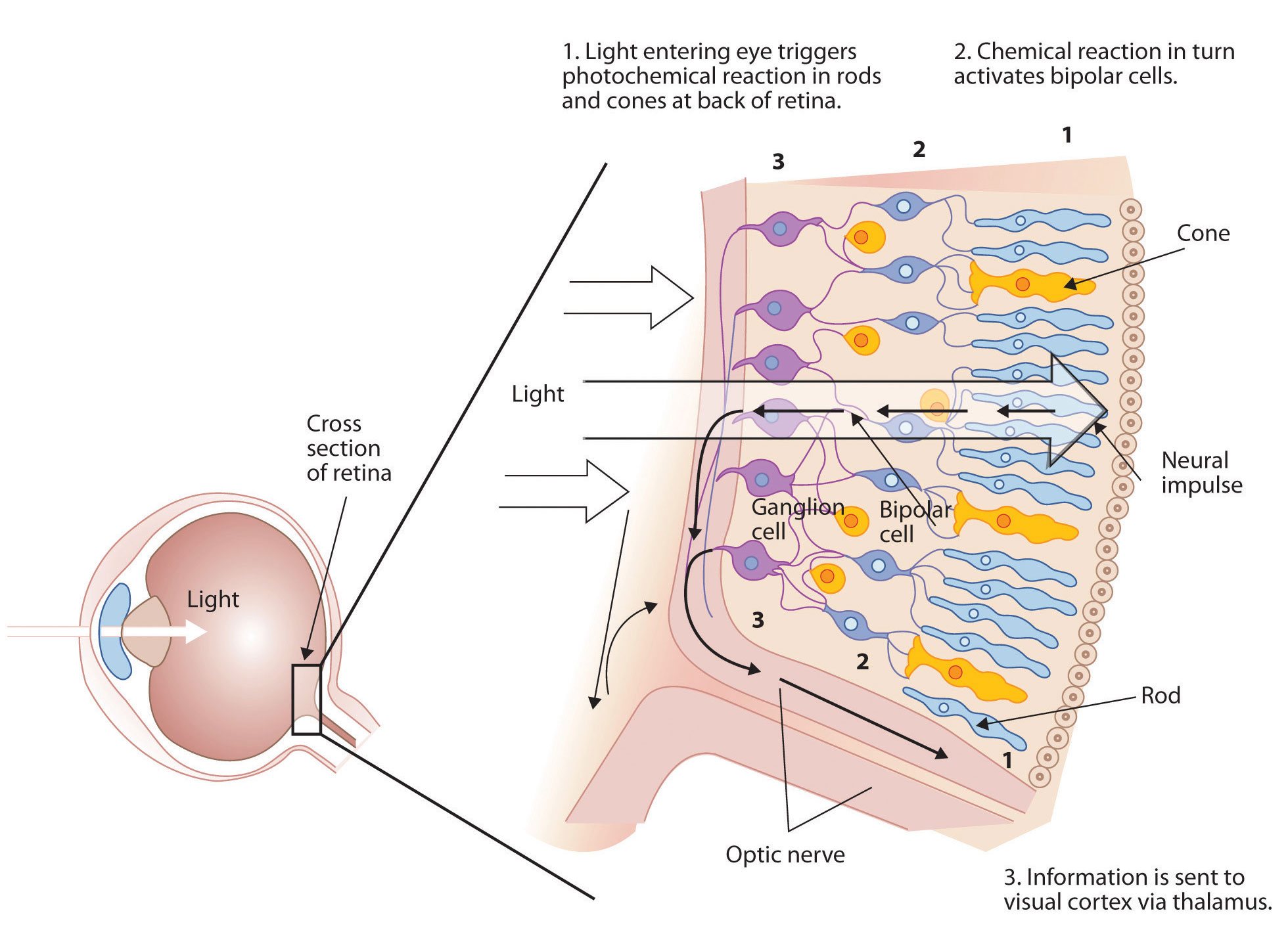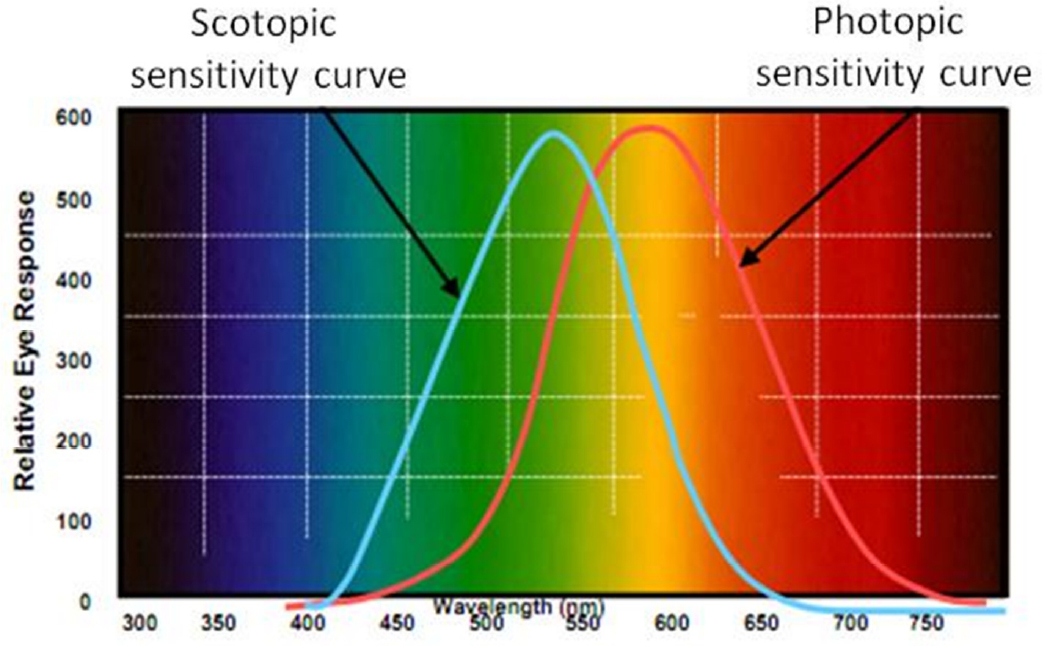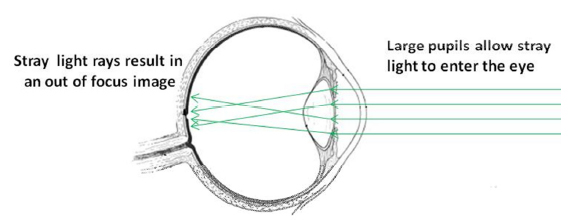Response of the Eye to Light
Updated on 05/29/19
Scoptic Lumens is the theory of understanding the response of the human eye to light. Eye responses not only to the intensity of light but also to the wavelength with 2 types of sensing cells, rods and cones affecting how the light signal is sent to the brain and images formed
Scoptic lumens also influence the final outcome of lighting solutions which this presentation explores the science behind it to select the correct lighting products

Case Study: LED 8,040 Lumens VS HPS 19,000 lumens
The image below shows 2 side by side carparks, one lit with LED parking lights of total 8,040 lumens (left) and the other with HPS lights of total 19,000 lumens (right) to which the LEDs appear brighter due to improved scoptics, better CRI and uniformity
LED lights appear brighter even at 50% less lumens resulting from better distribution, efficiency and uniformity with reduced spill lighting
Processing of Light By The Eye
The definition of lumen is the response of the cone cells in the human eye to light intensity. Rod and cone cells are found at the back of the eye and are responsible for converting images into electrical pulses that are sent to the brain to form an image
The cone cells pick up images in the direct line of sight by their brightness and rod cells are responsible for the rest of the visual field or the peripheral vision

Measuring Eye Response to Light
The sensitivity of the eye to light can be measured with Scoptic and Photoptic curves as seen by the diagram below
The Photopic Sensitivity curve measures the sensitivity of the cone cells which is relevant to intensity of the light whereas the Scoptic Sensitivity curves measures the sensitivity of the rod cells which is prevalent in low brightness conditions such as offices, warehouses, street lighting and most artificial lighting applications

In LED lighting each lamp type has a different photopic and scoptic lumen rating. Lamps with a larger component of blue light in their spectrum such as LEDs have a higher scoptic rating, which is the ideal in artificial lighting conditions where the rod cells operates
Measuring Image Sharpness of Light
Image sharpness of lighting relative to the human eye can also be measured using the S/P ratio which is a measure of scoptic sensitivity to photopic sensitivity. This is important because rod cell response is dependent on S/P ratio
Generally the rod cells regulate the size of the pupils so the more rod cells stimulated means smaller pupil size which means sharper image as less stray light enters the eye
Rod cells respond well to a high Scoptic/Photoptic lumen Ratios. Higher S/P ratio means greater stimulation of rod cells meaning a smaller pupil size and sharper image

For example a light source with a low S/P ratio, less rod cells stimulated meaning larger pupil size allowing more stray light to enter the eye resulting in an out of focus blurred image

Alternatively a lighting source with a high S/P ratio more rod cells are stimulated meaning smaller pupil size allowing less stray light to enter the eye resulting in a sharp image

LED lights have the highest S/P ratio by far resulting in sharper vision



